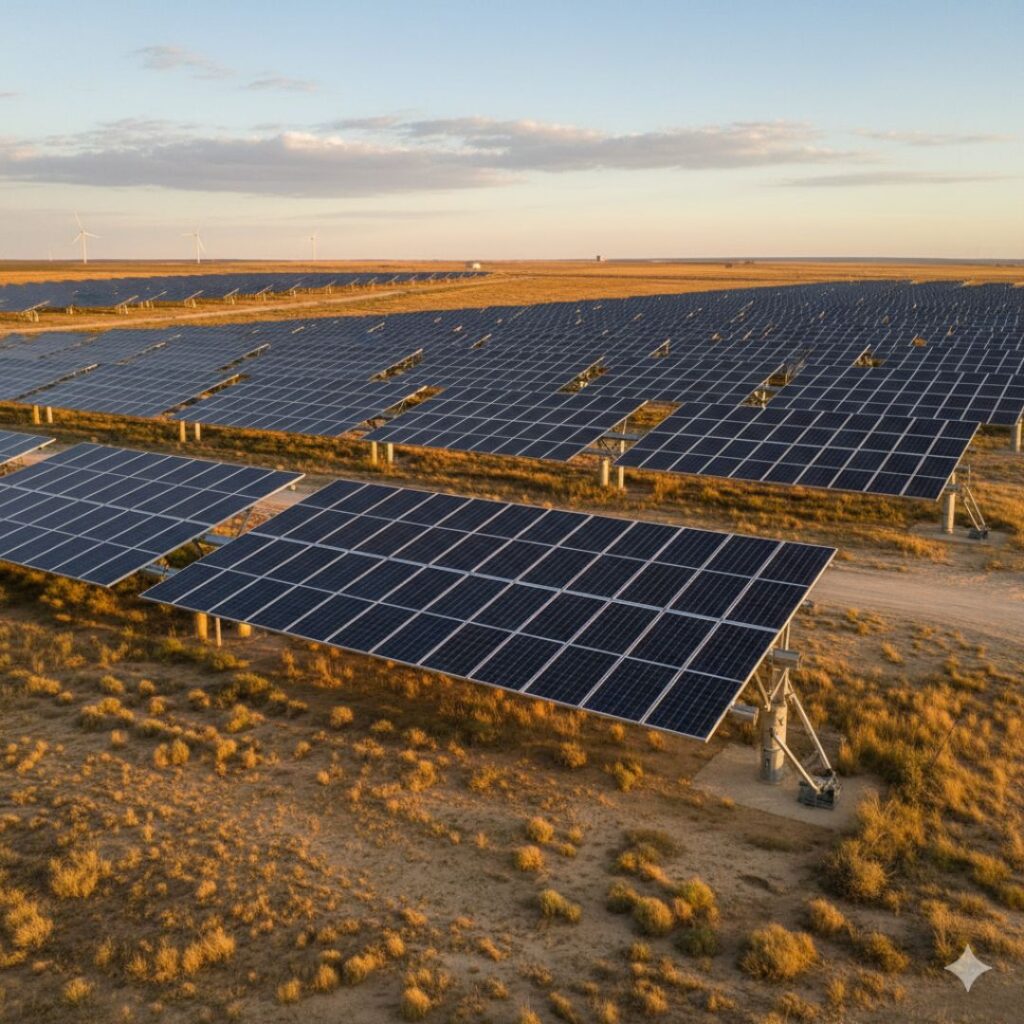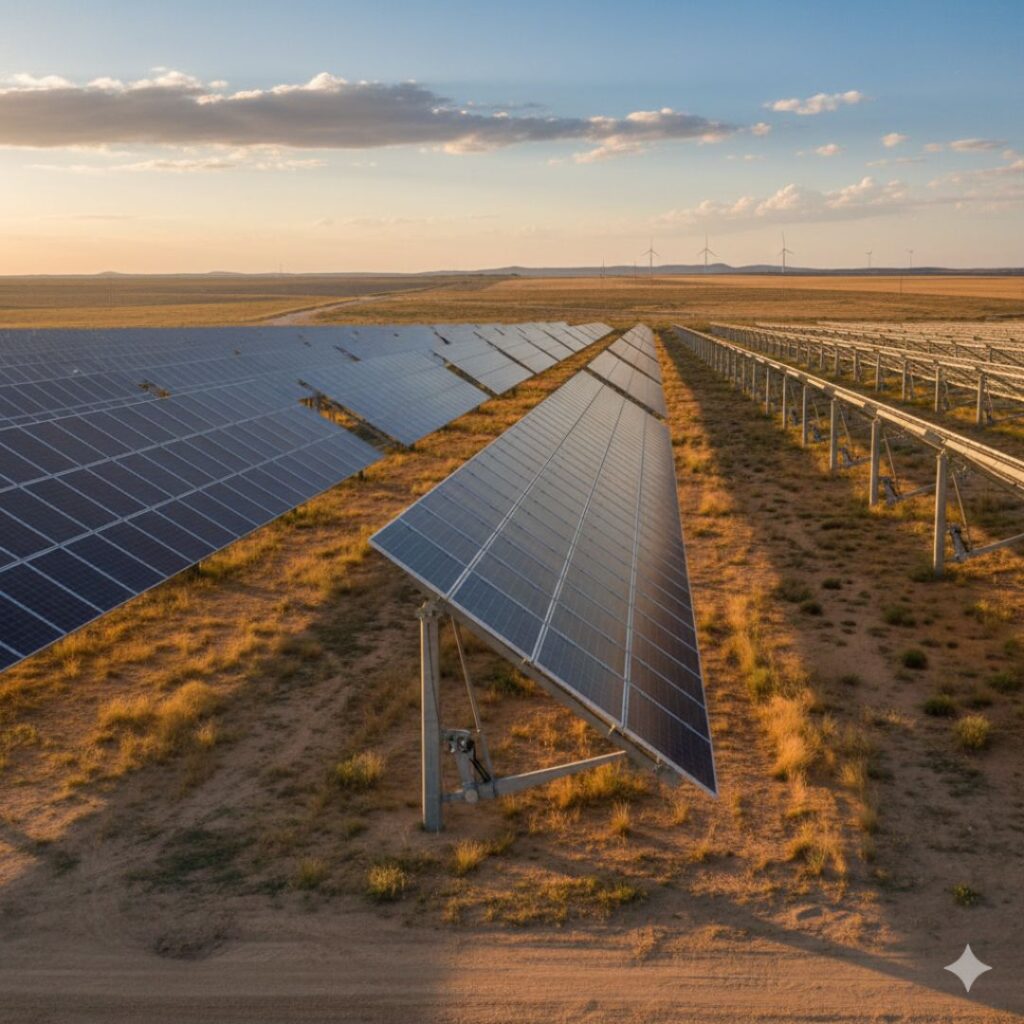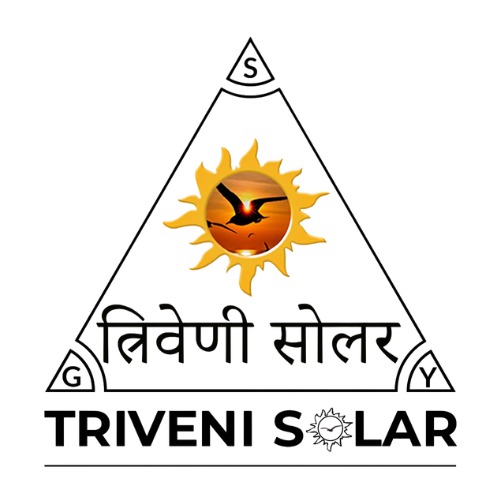Single-Axis Tracking Structures are advanced solar mounting systems designed to enhance energy capture by precisely following the sun’s movement on a single axis. These structures enable solar panels to pivot east to west throughout the day, increasing energy yield by up to 35% compared to fixed mounts. Built with high-strength galvanized steel and corrosion-resistant finishes, these systems offer durability, adaptability, and optimal performance, making them ideal for utility-scale and commercial solar projects.
Table of Contents
- Introduction to Single-Axis Tracking Structures
- Types of Single-Axis Trackers
- Technical Specifications & Material Strength
- Key Benefits of Single-Axis Tracking
- Applications in Solar Energy Systems
- Installation and Maintenance Tips
- Comparison: Single-Axis vs Fixed and Dual-Axis Trackers
- Frequently Asked Questions (FAQs)
- Final Thoughts & Call to Action
Introduction to Single-Axis Tracking Structures
Single-axis trackers rotate solar panels around one axis, generally aligned north-south, allowing panels to follow the sun’s path from east to west. This continuous tracking significantly improves the duration and intensity of sunlight exposure during the day, maximizing electricity generation. Compared to fixed solar mounts, which remain at a static angle, single-axis trackers boost energy output and project profitability while maintaining strong structural resilience against environmental challenges.

Types of Single-Axis Tracking Structures
There are several variations of single-axis tracking systems, each catering to different site conditions and project requirements:
- Horizontal Single-Axis Tracker (HSAT): The most common type, with the axis parallel to the ground. Panels rotate east-west with tilt angles typically up to ±60°, suited for flat or gently sloped terrains.
- Horizontal Tilted Single-Axis Tracker (HTSAT): Similar to HSAT but tilted to match geographic latitude or reduce shading, offering slightly better energy yield.
- Vertical Single-Axis Tracker (VSAT): Rotates on a vertical axis, ideal for extreme latitudes or mountainous regions.
- Vertical-Tilted Single-Axis Tracker (VTSAT): Combines vertical rotation with tilt for optimized energy capture on tricky terrains.
Technical Specifications & Material Strength
| Specification | Details |
|---|---|
| Axis Orientation | Typically North-South, customizable based on site conditions |
| Rotation Range | ±50° to ±60° tilt angles configurable |
| Wind Load Resistance | Withstands up to 180 km/h with automated stow positions |
| Temperature Range | Operational between -10°C and 65°C |
| Material | High-strength galvanized steel with corrosion-resistant coatings |
| Structural Design | Utilizes W beams, I-beams, H-beams, and cold-formed C-channels up to 4.5 mm thickness |
| Foundation | Adaptable to various soil and terrain types |
| Module Capacity | Supports 1P and 2P photovoltaic modules |
| Control System | Automated motor-encoder unit with backtracking to prevent shading |
Key Benefits of Single-Axis Tracking Structures
- Increased Energy Yield: Offers 25-35% more power generation compared to fixed mounting systems, improving ROI.
- Durability & Stability: Robust design withstands high winds and seismic activity.
- Cost-Effective: Less expensive and simpler to maintain than dual-axis trackers while offering substantial energy gains.
- Versatile: Suitable for diverse terrains, including uneven ground.
- Low Maintenance: Modular components make installation and upkeep easier.
- Weather Resistant: Coated for corrosion protection, ensuring a long service life in varying climates.
Applications in Solar Energy Systems
Single-axis trackers are perfect for a variety of solar projects:
- Utility-scale solar farms maximizing energy output.
- Commercial and industrial rooftops requiring efficient space use.
- Agrivoltaic setups integrating farming with solar generation.
- Remote and off-grid installations where reliability is critical.
Single-Axis Tracking Structure Installation and Maintenance Tips
- Site Evaluation: Assess soil and terrain to select the appropriate foundation design.
- Foundation: Use adaptive mounting systems to handle uneven surfaces.
- Calibration: Regularly adjust tracking control systems for precise sun alignment.
- Corrosion Protection: Apply protective coatings and conduct inspections, especially in coastal or humid areas.
- Maintenance: Lubricate moving parts routinely and inspect structural integrity after severe weather events.

Comparison: Single-Axis vs Fixed and Dual-Axis Trackers
| Feature | Single-Axis Tracker | Fixed Mount | Dual-Axis Tracker |
|---|---|---|---|
| Sun Tracking | Rotates on one axis (East-West) | No tracking; stationary mount | Rotates on two axes for full sun tracking |
| Energy Increase | 25%-35% more than fixed mounts | Baseline (no increase) | Up to 40%-45% more than fixed |
| Initial Cost | Moderate | Lowest | Highest due to complexity |
| Maintenance | Low to moderate | Minimal | Higher, due to complexity |
| Ideal For | Utility and commercial solar farms | Small/simple installations | Specialized projects aiming for max yield |
Frequently Asked Questions (FAQs)
What is a single-axis tracking structure?
A solar mounting system that moves panels on one horizontal axis to follow the sun, improving energy capture throughout the day.
How much more energy can single-axis trackers produce compared to fixed mounts?
They typically increase energy output by 25-35%, varying with location and design.
Are single-axis trackers suitable for all terrains?
Yes. Their adaptable foundations and modular design allow installation on flat, sloped, or uneven land.
What materials are these structures made from?
High-strength galvanized steel with corrosion-resistant coatings, including thick beam sections for stability.
Do single-axis trackers require intensive maintenance?
Maintenance is low to moderate, generally involving routine inspections and lubrication to ensure longevity.
Can these trackers withstand harsh weather conditions?
Yes, they are engineered to resist wind speeds up to 180 km/h and have automated stow positions to protect during storms.
Final Thoughts & Call to Action
For solar developers, EPC contractors, and government agencies aiming to maximize energy efficiency with durable and cost-effective solutions, Single-Axis Tracking Structures offer unmatched benefits. At solarstructure.co.in, we provide expertly engineered, high-quality single-axis trackers tailored to your project’s needs. Elevate your solar project’s performance and lifespan with our trusted mounting systems.
Ready to boost your solar energy output? Get a free quote and expert consultation today!

